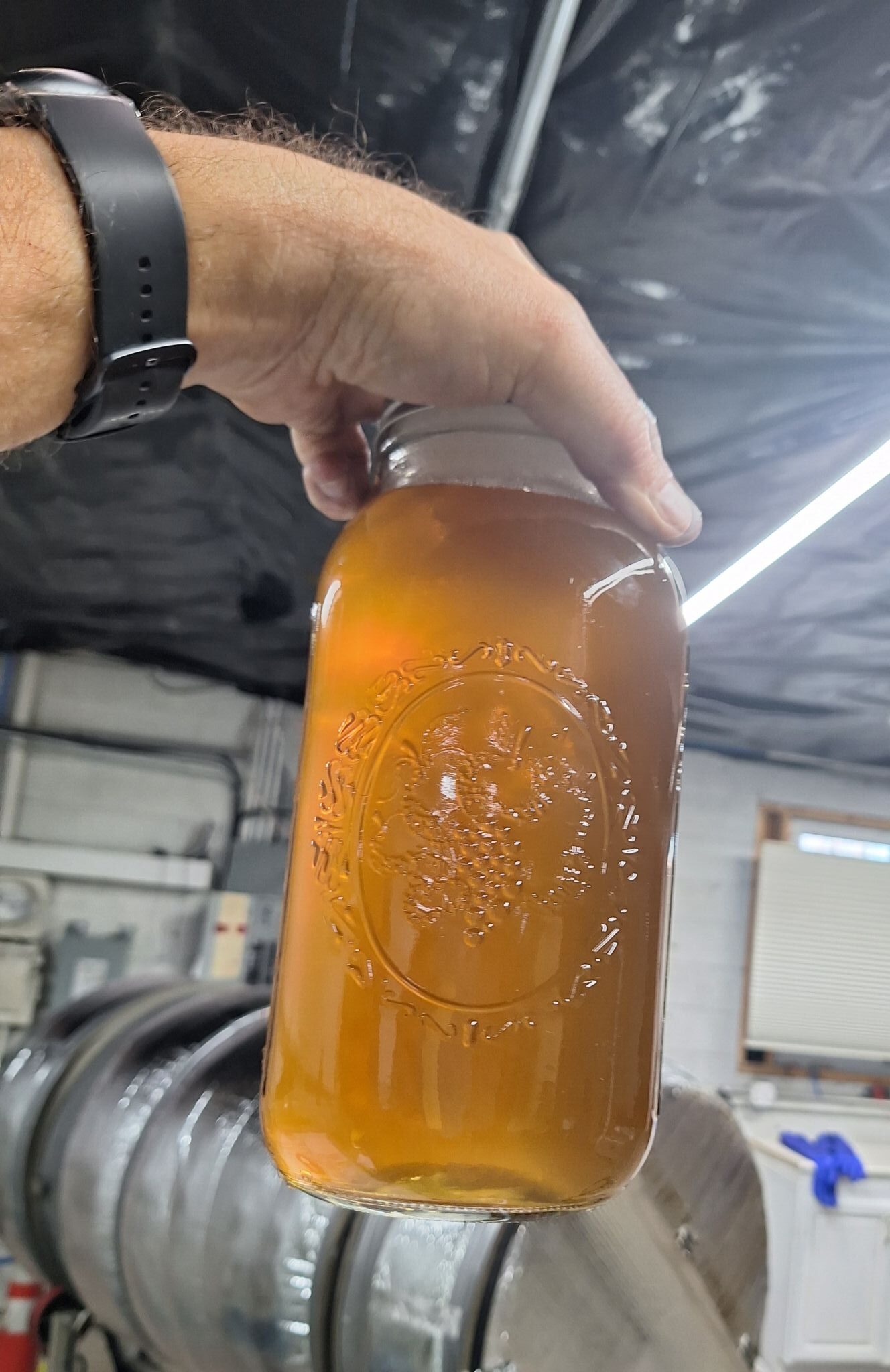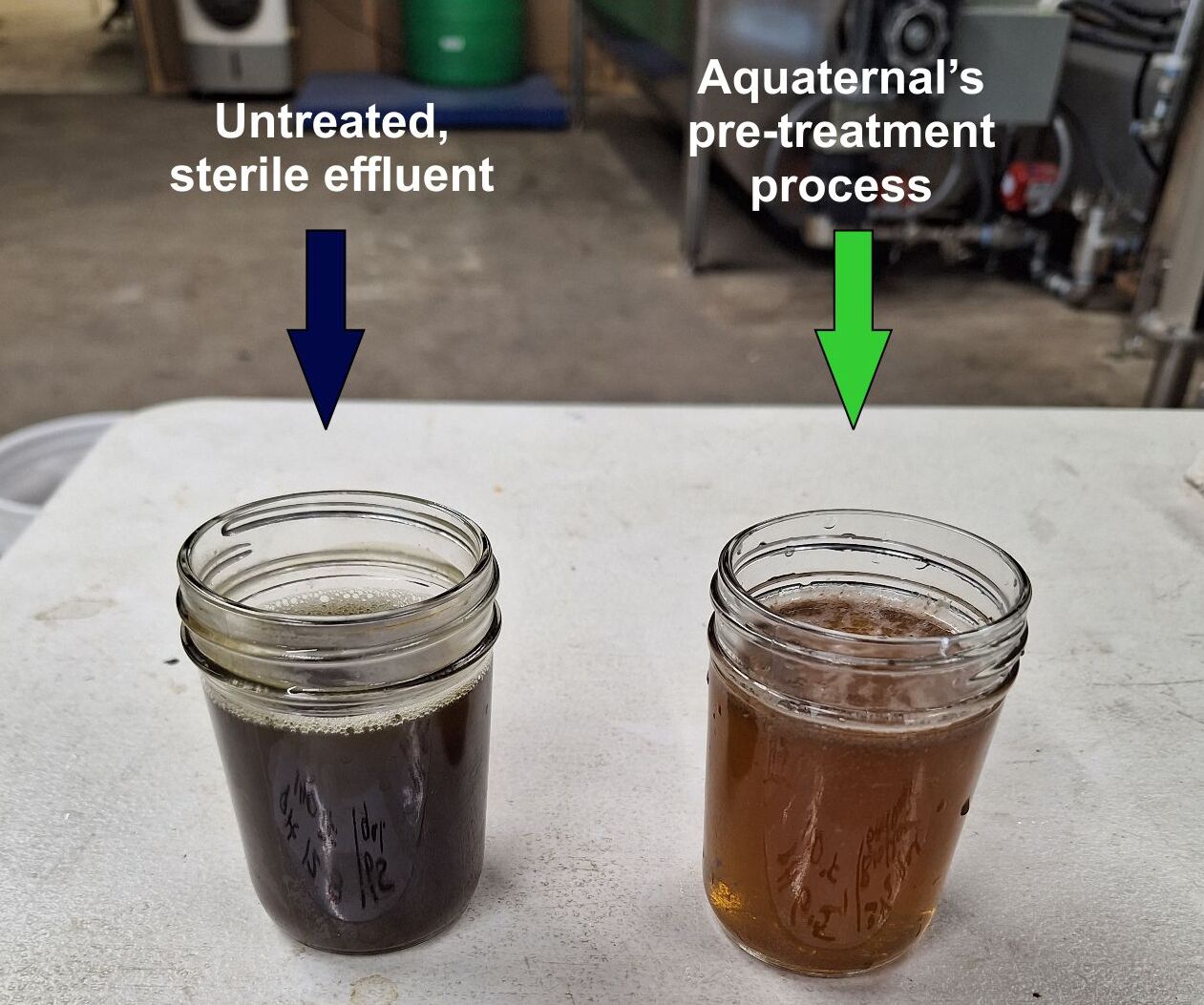Alkaline Hydrolysis Effluent: A Sustainable Solution for Regenerative Agriculture, Reforestation, and Eco-Friendly Death Care
As the world seeks sustainable alternatives to traditional practices, the conversation around death care has evolved. Alkaline hydrolysis (AH), also known as water cremation or aquamation, is gaining recognition as a low-impact alternative to flame cremation. Beyond its environmental benefits, AH effluent represents a unique opportunity to contribute to regenerative agriculture, reforestation, and a circular economy.

What is Alkaline Hydrolysis

Alkaline hydrolysis uses water, alkalinity, and heat to accelerate natural decomposition. The process produces a sterile liquid effluent rich in amino acids, peptides, potassium, nitrogen, and trace minerals. Aquaternal’s proprietary treatment process refines this effluent, ensuring its safety for agricultural and environmental applications.
The effluent’s balanced nutrient profile can rejuvenate degraded soils, enhance microbial activity, and promote plant growth. With proper dilution (100:1), it provides essential nutrients for deep-rooted plants, contributing to carbon sequestration and biodiversity.
Nutritional Profile & Soil Benefits
A human body is ~3% nitrogen by mass, primarily in proteins, nucleic acids, and other organic molecules.
During alkaline hydrolysis (AH), the body is processed in a strongly basic, high-temperature aqueous solution (typically potassium hydroxide, KOH). This process hydrolyzes proteins and other biomolecules into their basic components:
- Amino acids and their salts (organic nitrogen compounds)
- Peptides
- Small organic molecules (fatty acids, glycerol, sugars, nucleotides, etc.)
- Some ammonia (NH₃/NH₄⁺), especially if amino acids deaminate under high pH and heat
Most nitrogen in the final effluent is in the organic form (amino acids, peptides, dissolved organic nitrogen), with a smaller portion as ammoniacal nitrogen (NH₄⁺). Because the process isn’t fully oxidizing (unlike incineration), nitrogen isn’t converted to nitrate/nitrite but remains in a more reduced, bioavailable form.
Most of the nitrogen in alkaline hydrolysis effluent is considered “organic nitrogen” because it is bound in amino acids, peptides, and other organic molecules rather than inorganic nitrate/nitrite. This matches the soil science use of the term, where “organic nitrogen” means nitrogen in organic molecules, not simple inorganic ions.

Relevance to Soil Health
Organic nitrogen is slow-release compared to synthetic nitrate fertilizers. Microbes mineralize it over time, improving soil microbial activity and structure.
Krishnan et al. (2023) showed that organic nitrogen supports water-use efficiency in tropical seedlings because:
- Organic N compounds can be directly absorbed by some plants and mycorrhizal fungi.
- Organic N promotes soil microbial diversity, which improves soil moisture retention.
Effluent from AH could mimic the organic nitrogen input from natural decomposition. It’s a nutrient-dense solution similar to compost teas or digestates.
Carbon Chemistry in AH Effluent
A significant fraction of body carbon (~18% of total body weight) ends up in the liquid phase because the AH process:
- Breaks down carbohydrates into sugars and organic acids
- Hydrolyzes fats into glycerol and free fatty acid salts (soap-like compounds)
- Leaves behind low–molecular-weight dissolved organic carbon (DOC) such as amino acid backbones, organic acids, and peptides
Carbon’s Role in Soil Health
Residual carbon from AH effluent is potentially highly beneficial for soils if properly neutralized and applied carefully:
- Food for soil microbes
- The mixture of amino acids, peptides, and sugars is highly bioavailable, which can jumpstart microbial activity in soils.
- This microbial boom increases nutrient cycling and organic matter incorporation.
Organic Matter & Soil Structure
Repeated use could help build soil organic matter (SOM), improving aggregation, aeration, and water retention. This aligns with regenerative agriculture principles: use biologically derived carbon to enhance soil health.
Rhizosphere Benefits
Dissolved Oxygen Carbon in water cremation effluent acts as a carbon source for mycorrhizal fungi and rhizobacteria, which improves nutrient availability in the root zone.
Krishnan et al. (2023) and similar studies highlight that pairing organic nitrogen with labile carbon promotes symbiotic root–microbe interactions, improving water-use efficiency.

Aquaternal’s Proprietary Effluent Treatment
Aquaternal employs a bioflocculant-based treatment to reduce Biological Oxygen Demand (BOD) and Chemical Oxygen Demand (COD), producing a clear, golden liquid. This treatment ensures a safer use in agriculture and offers a scalable, eco-friendly solution for communities worldwide.

By using AH effluent as a soil amendment, communities can restore organic matter, improve soil fertility, and reduce reliance on synthetic fertilizers.
This aligns with regenerative farming principles, supporting biodiversity and reversing land degradation.
Supporting Reforestation Efforts
Reforestation projects benefit from nutrient-rich effluent that strengthens root growth in young trees, accelerating ecosystem recovery. This is especially valuable in areas with depleted soils where biodiversity restoration is a priority.
Circular Economy Impact
AH effluent illustrates a true circular economy model: byproducts of one process become resources for another. This approach reduces waste, lowers emissions, and demonstrates a scalable path toward sustainability.

Closing The Loop of Life
Aquaternal’s technology represents a paradigm shift in death care. With its nutrient-rich effluent and advanced treatment methods, alkaline hydrolysis offers a path to a more sustainable world. By applying effluent to regenerative agriculture and reforestation, we can build resilient ecosystems and contribute to a greener future.
There is no single perfect solution to reversing climate change, yet how we choose to return to the Earth may be as meaningful as how we chose to live upon it.
